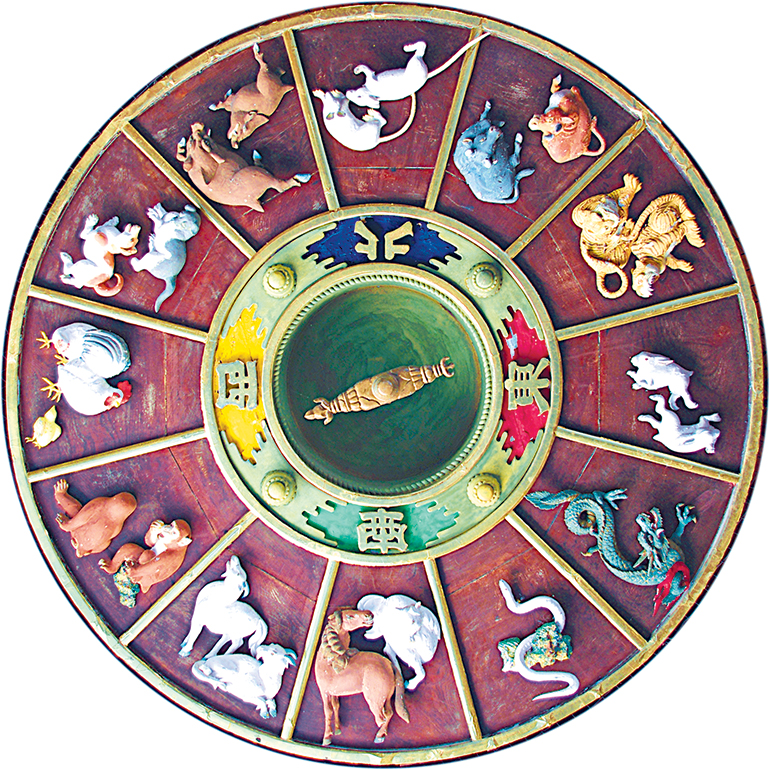Understanding the Chinese calendar and zodiac

So far, Chinese cultural influence has been evident worldwide by the constant celebration of Chinese traditions and practices. This can be seen not just in the regular festivities of the Lunar New Year, but also in the systems that are often mentioned alongside the occasion, namely the lunar calendar and the Chinese zodiac.
Unlike the Gregorian Calendar, the Chinese calendar, also known as the lunar calendar, features 12 or 13 lunar months each year. The lunar calendar is used to decide the dates on which traditional Chinese holidays will be celebrated and also serves as guide for Chinese zodiac astrology.
The first day of the month starts when the moon aligns with the earth and the sun, and the middle of the month occurs when the full moon appears. The lunar year consists of 12 or 13 months, with 354 or 355 days in a year for those 12 months. Thus, a leap month occurs in two to three lunar years in order to make up for the other 10 days on the Gregorian calendar.
As aforementioned, the lunar calendar is slightly different from other calendars, and creating leap months where a 13th month is added to the calendar. 2020 marked the last leap month on the lunar calendar, thus, the next leap month will happen in 2023, which will also be the second lunar month.
“As a lunar month is on average 0.92 days shorter than a ‘solar month,’ the lunar calendar is just under a day per month slower than the solar calendar. To prevent the lunar calendar from becoming more than half a month of sync with the solar calendar, an extra leap month is added to the lunar calendar every 32 or 33 months,” China-oriented travel platform Chinese Highlights explained on its website.
The months from the lunar calendar vary throughout the years. For instance, a short month in Chinese has only 29 days, whereas a big month consists of 30 days.
Each lunar month, Chinese Highlights added, was given a name in accordance with what people do or which trees or flowers blossom in the said month. The first month is called the start month; the second month the apricot month; the third month a peach month; the fourth month the locus tree month; the fifth month the sweet sedge month, in which the Dragon Boat Festival is said in the fifth day of the month; the sixth month the lotus month, as lotus flowers start to blossom; the seventh month the skill month; the eighth month the osmanthus month; the ninth month the chrysanthemum month; the tenth month the yang month, when the Taoist yang force is believed to be strong; the eleventh month the winter month, coinciding with the winter solstice; and, finally, the twelfth month the preserved month, when meats are preserved for the Spring Festival.
At present, the Gregorian calendar is commonly used by Chinese communities. Nonetheless, they still pay attention to lunar dates for celebrating important traditional Chinese festivals, including the Spring Festival, Dragon Boat Festival, and Mid-Autumn Festivals, unlike before when the lunar calendar is being utilized for daily discourse and special occasions.
Chinese zodiac signs have also become an essential facet that many until now have still sought for a deeper understanding of their personality and their fortune in the future as represented by zodiac animals.
A zodiac animal, each with its own traits, represents each year in the 12-year cycle. The Chinese zodiac consists of 12 animals, namely, the rat, ox, tiger, rabbit, dragon, snake, horse, sheep, monkey, rooster, dog, and pig.
“Chinese people believe that a person’s horoscope, personality and love compatibility are closely associated with his/her Chinese zodiac sign, determined by his/her birth year,” Chinese Highlights explained.
For instance, the zodiac signs are associated with the following personalities: rats are seen as quick-witted, oxen are diligent, tigers are brave, rabbits are quiet, dragons are confident, snakes are enigmatic, horses are animated, goats are calm, monkeys are sharp, roosters are observant, dogs are prudent, and pigs are compassionate.
While astronomical and Chinese zodiacs both include 12 signs with an associated personality and fortune, both systems used time of birth as their basis for determining and assigning the signs. However, the Chinese zodiac is based on archetypal animals from folks and legends which is significant to Chinese culture; whereas astronomical signs are based on the distance between constellations and the earth, deriving from Greek mythology and astrological philosophy. In addition, the Chinese zodiac is determined by the year, while astrological signs are determined by the month.
In a TED talk titled “The Chinese zodiac, explained” in 2016, Taiwanese technologist and entrepreneur ShaoLan Hsueh highlighted the influence of the Chinese zodiac, which reached “as much as a quarter of the world population.”
According to Ms. Hsueh, the theoretical framework that Chinese ancestors created years ago has become a part of popular culture up to present times. The popularity of the Chinese zodiac through time has influenced people’s decisions, including personality, marriage, birth, or even career.
“As China plays such an important role in the global economy and geopolitics, the decisions made on the zodiac and other Chinese traditions end up impacting everyone around the world,” Ms. Hsueh explained. — Angela Kiara S. Brillantes



